Spring Songs in Xinhui — The Yamen Fort of Qing Dynasty and the Historic Yamen Sea Battle
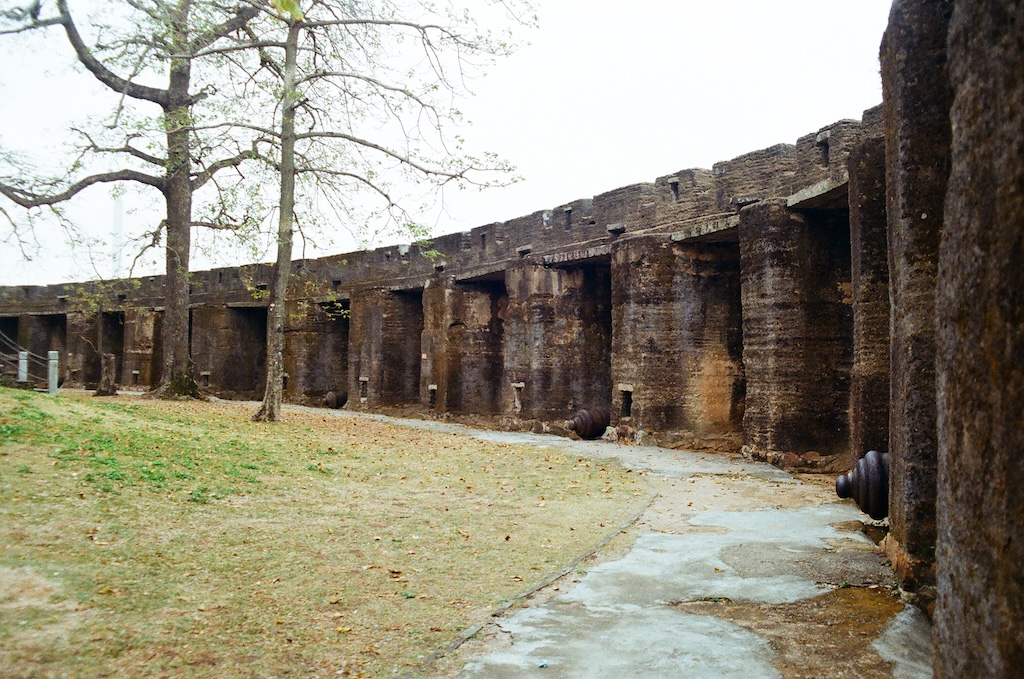
After seeing the Lvmei Ecological Park and the Shijian Park, I was geared up for some historic sightseeing. The Yamen Fort came into mind. The Qing dynasty era old fort stands beautifully restored at the mouth of the Pearl River. It has a proud history to speak of, and a sense of antiquity breathes through the fort at the near-dusk hours.
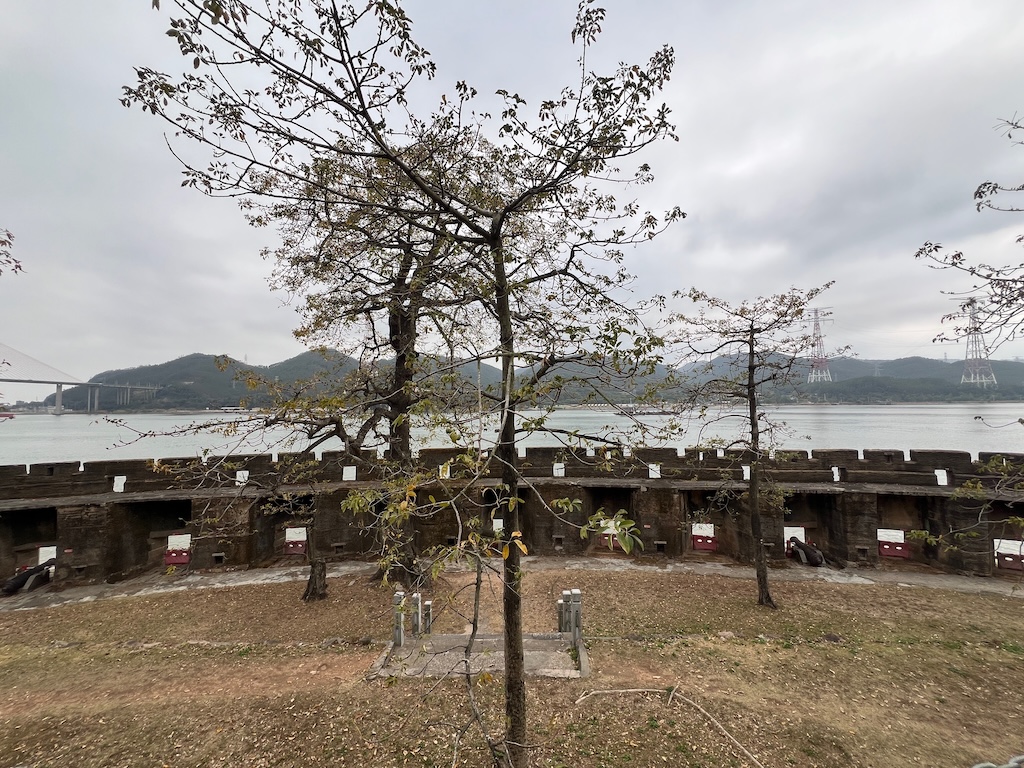
It took about a 50-minute car ride from Shijian Park to the Yamen Fort. I arrived at about 6 minutes after 4:30pm, which was its closing time. At first, the guard stopped me from entering, and I begged him for me to take just a quick look for pictures. There were still tourists inside, and as a result he let me in.
The opening hours of the Yamen Fort is Tuesdays to Sundays 9:30am to 4:30pm. It might open on a national public holiday but you should inquire before going. There is no admissions fee for the Yamen Fort. It takes just about less than half hour to see the fort itself and to photograph it.
The History of the Yamen Fort
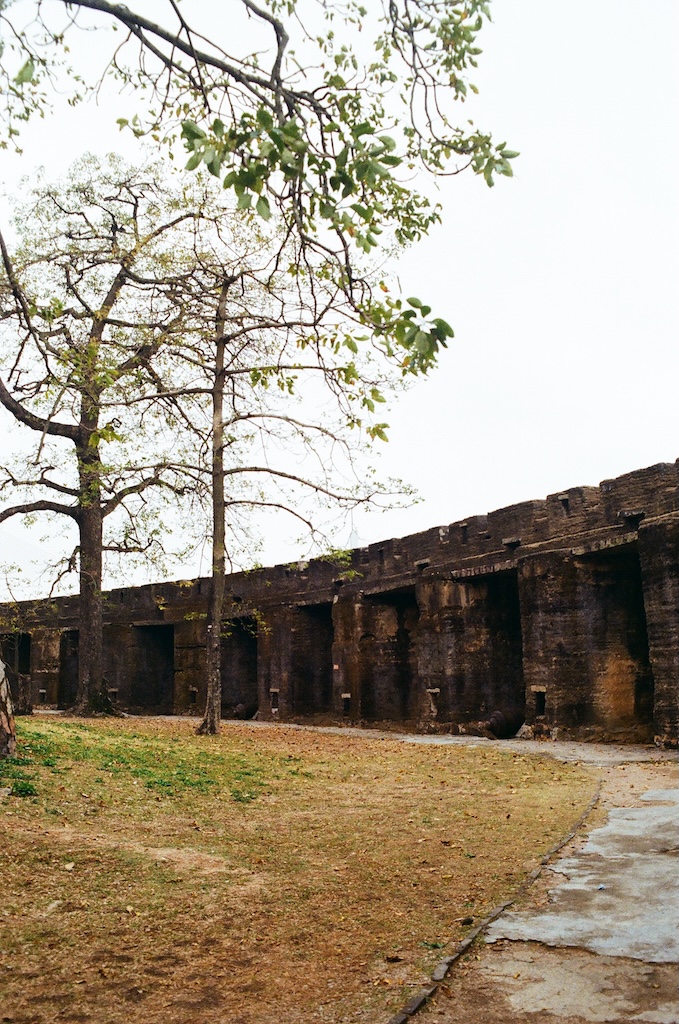
The earliest military installations at the Yamen Fort took place during the 57th year of the Kangxi reign (1718) in the Qing dynasty. The full facility came into place in the 14th year of the Jiaqing reign (1809).
Yamen acquired its Chinese name due to the Yashan Mountain in the east and the Tangmingshan Mountain in the west. At this location, the imagery is that of a half-open gate (men) at the Yashan Mountain, thus Yamen. The Yamen Fort is located on the eastern shore of the Yamen mouth of Pearl River. This is one of the eight mouths of the Pearl River, where it meets the South China Sea. As such, this is a strategic location for defense purposes.
The Yamen Fort is the largest single-structure ancient fort in Guangdong Province. It was constructed in the shape of a half-moon, facing the river. The middle gun platform faces right into the Yamen River mouth. The foundation and the body of the fort were constructed with granite and Greystone respectively. At a length of 180 meters and a height of 6 meters, the fort features two rows of gun platforms on the upper and lower levels, with a total of 43 cannon holes. These cannons point at the Yamen River mouth to effectuate maximum defense.
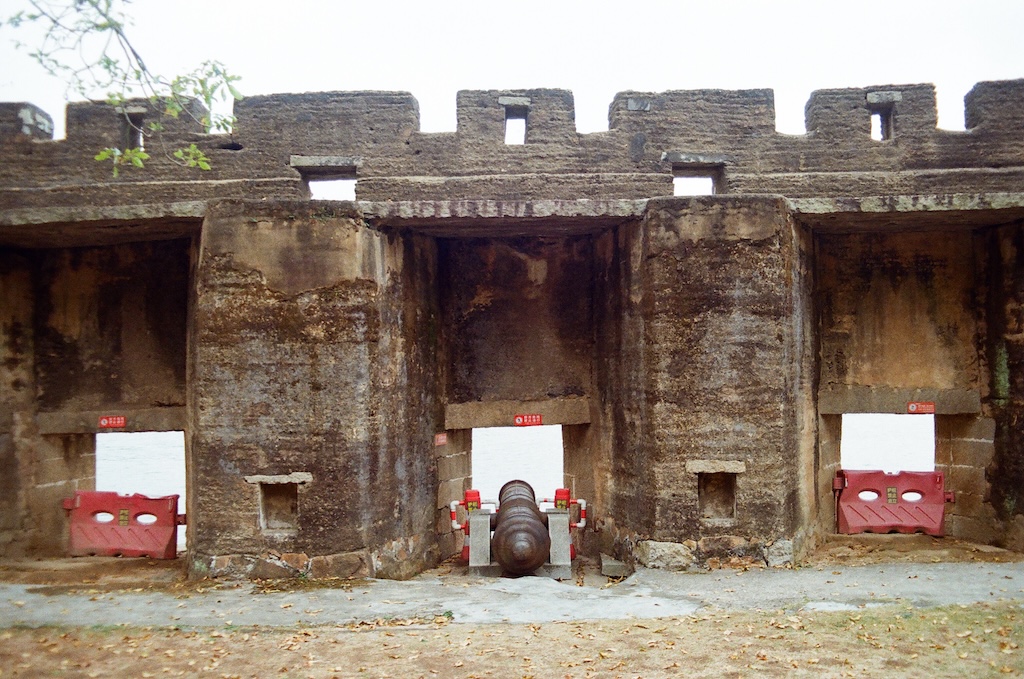
In the mountain at the back of the fort, there used to be supportive defensive facilities, such as ammunition storage and underground pathways to the barracks. However, due to disrepair, these structures have already collapsed.
In 1961, the Xinhui County People’s Government allocated funds to restore the Yamen Fort. In 2005, the Xinhui District People’s Government again conducted significant reconstruction and restoration work here as well.
Defensive History at the Yamen Fort
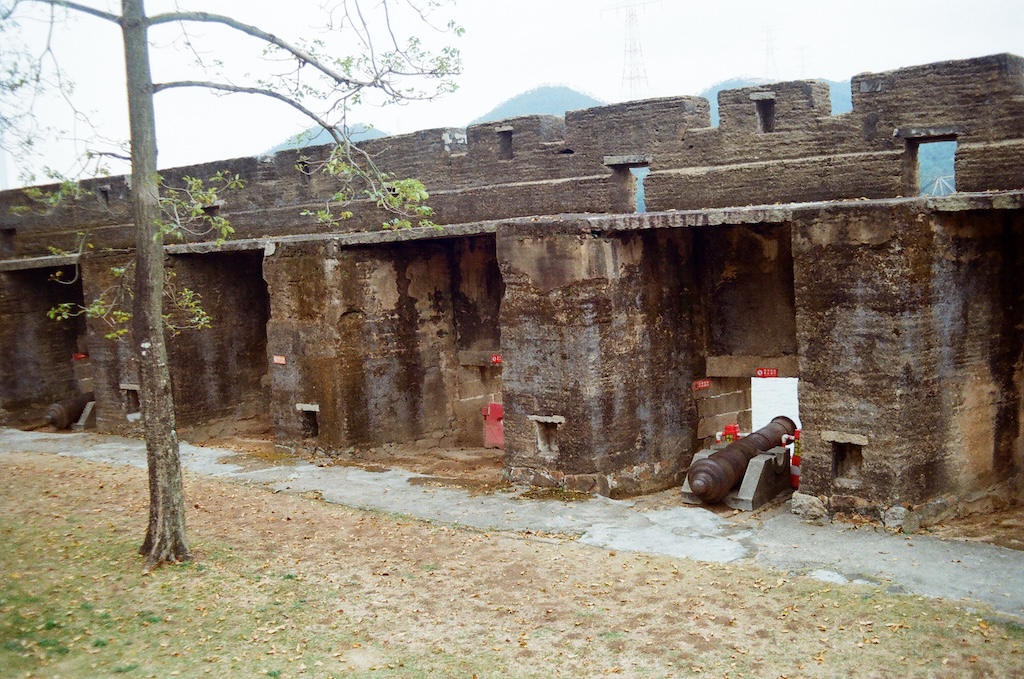
Throughout its history, the Yamen Fort had served its defensive purpose in many occasions. During the Qing dynasty, it was a formidable defense against pirates approaching this part of Guangdong. During the Opium Wars, Lin Zexu, the Viceroy of Huguang, commanded a heavy defensive position in this location. There was no actual battle against the British forces here, but the descriptions on site suggest that the heavy fortification then had the effect of stalling a plan of attack. There is no verification on this point of history. Finally, during the Anti-Japanese Resistance effort of WWII, there were battles against the impending Japanese forces at the Yamen Fort as well.
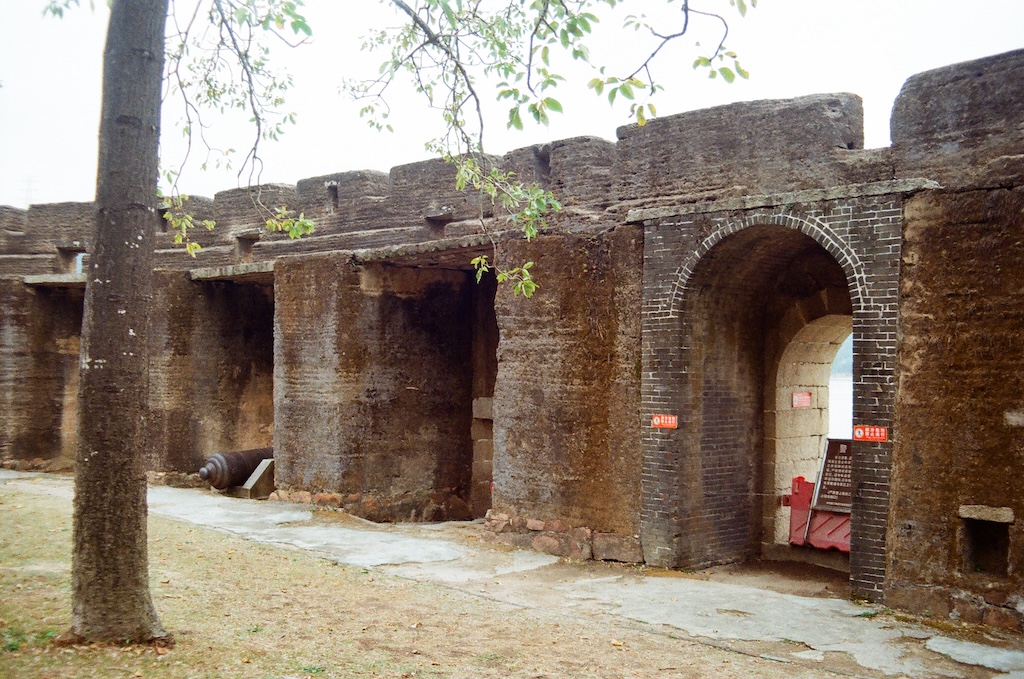
A Key Historic Yamen Sea Battle in Xinhui
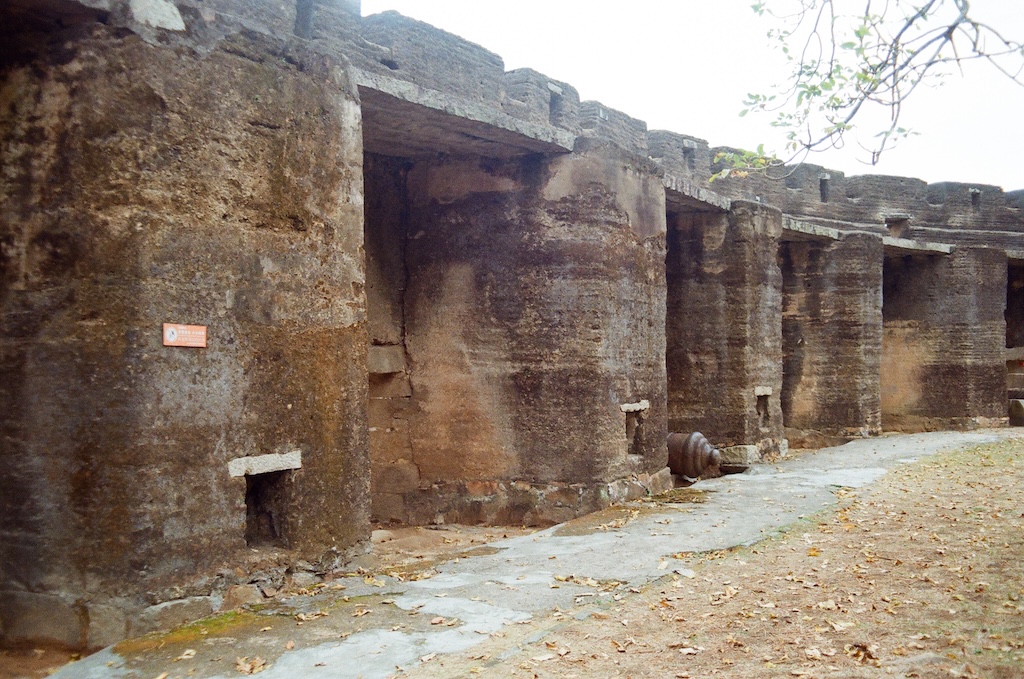
Very relevant to the history of Yamen is the historic battle that took place in this part of China at the turn of the Song and Yuan Dynasties. Although there was no actual record of the exact location of this battle, it is well-known that the key battle that signified the final demise of the Song Dynasty took place in Yamen, Xinhui. This battle was known as the Yamen Sea Battle.
For a brief historical context, the Southern Song Dynasty was a result of the gradual decline of the Song Dynasty. The Jin Dynasty took over the Northern Song Dynasty, and the Song imperial court started the Southern Song Dynasty with the capital in Hangzhou in 1127 A.D.
Toward the end of the Southern Song Dynasty, the Mongolian forces, which were known for their warrior propensities, that would become the Yuan Dynasty seized territory after territory against the Southern Song Dynasty’s strongholds in southern China. As a result, the remaining generals that were loyal to the very young Song Emperor Duanzong continued its exile. Both Emperor Duanzong and the later Emperor Di Bing would be on exile in Hong Kong for a while. They then ended up fleeing north to Guangdong.
Emperor Duanzong was nearly drowned as the troops attempted to flee in ships. He died soon, leaving his brother Emperor Di Bing, the very last emperor of the Song Dynasty, to be the last and certainly dimmed hope for the dynasty.
At the Yamen Sea Battle, the Song forces lined up in a horizontal manner as they gathered all their fleets, numbering more than a thousand. Some were battle ships but a lot of them were merely reinforced civilian vessels. It is believed that the Song forces were 200,000-strong. The Yuan forces surrounded the Song fleets on three sides. They were actually outnumbered, with 70,000 fighters and 400 battleships.
After a failed attempt to destroy the Song troops with a fire attack, the Yuan forces then surrounded the fleets and cut off their supply route to the land. The soldiers and Song supporters relied on their food reserves for more than ten days, but their water ran out. The battle would go on for 23 days. It is also remembered to be one of the “Four Great Naval Battles in China.”
It is worth mentioning that, Wen Tianxiang, who was a lauded loyalist to the Southern Song Dynasty, was kept captive at the Yuan ships. He watched the battle unfold and wrote a beautiful poem to lament the fall of his beloved Song Dynasty. He is one of the most celebrated patriotic heroes throughout Chinese history.
In the year 1279, Song Dynasty finally fell as tens of thousands of the very last military sinew of the Song Dynasty committed suicide on the sea. A general bore the very young Emperor Di Bing and also plunged into the sea together, thus ending the Southern Song Dynasty’s 152 years of ruling in southern China.
Having won this battle, the Yuan forces took over all of the territory in central China.
If you have a half a day for this area of Xinhui, you may consider visiting the Xinhui Songyuan Yamen Sea War Culture Tourist Zone nearby the fort. It is a tour with detailed narratives about the naval defense of China in the ancient times, in particular the Yamen Sea Battle, with many photogenic spots.
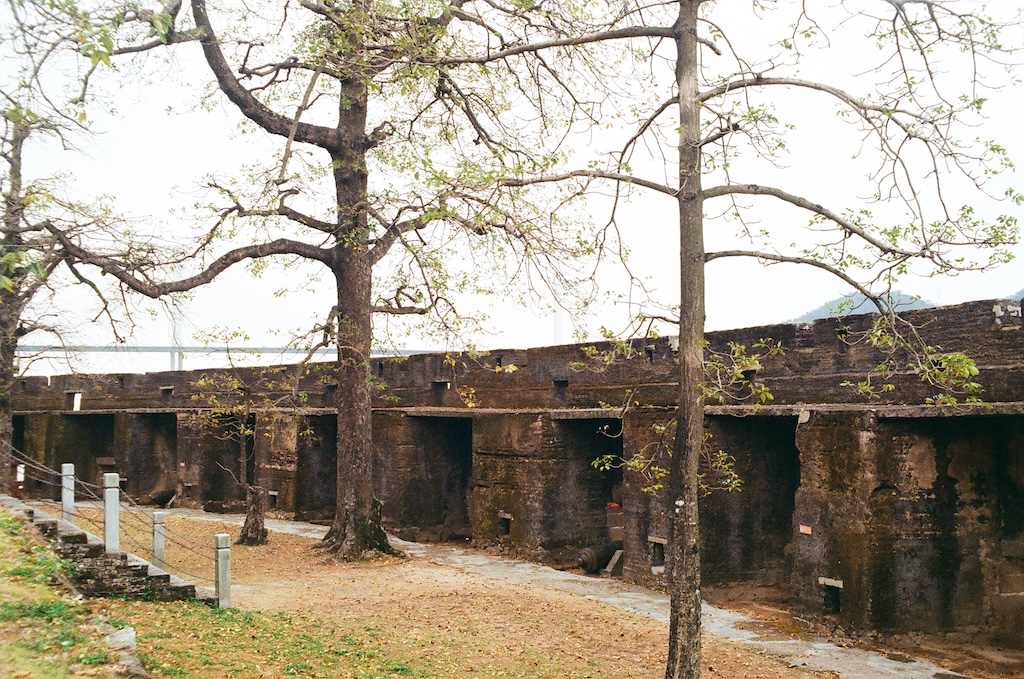
Sources
Descriptions on site at the Yamen Fort.
The Wikipedia on The First Opium War (Chin).
The Wikipedia on Yamen Sea Battle (Chin).
